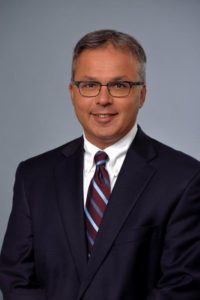Many physicians I know are struggling to make ends meet while making several hundred thousand dollars per year. Despite growing incomes, their savings rates remain extremely low due to ever increasing expenses. What they do manage to save, they turn over to professional money managers.
How does this happen? Why are some of the smartest, hardest-working and most responsible members of our society unable to create real wealth? The answer is two words: financial illiteracy. Doctors spend so much time in school memorizing facts but receive little education in basic financial skills that can provide a real and lasting positive impact on their professional and personal lives.
After finishing residency, I was on the typical path of most young doctors. I was excited about my new private practice job and the dramatic increase in income it brought. I bought a fancy luxury car, sold our lovely two bedroom house in the city, and moved to a five bedroom house in a nice suburban school district. I set up investment accounts at a local wealth management company. I also purchased disability insurance and began “investing” in both variable and term life insurance.
To everyone around me, I was doing great. Unfortunately, I knew better. My expenses were steadily increasing without the commensurate increase in happiness, and I had very little control over the performance of my investments. In order to gain some of the financial literacy that I lacked, I started reading books on finance and investing. This is when I luckily came across the writings of Robert Kiyosaki, and my life has never been the same.
Robert Kiyosaki is the author of many best-selling books, including Rich Dad Poor Dad, arguably his most popular book. A main teaching point of his is anything that does not put money in your pocket is a liability, not an asset. This is a huge shift from the way net worth is usually calculated. Vacation houses, expensive cars, and other high priced toys are typically considered assets by bankers. Accordingly, many physicians look at their large house as an investment that boosts their net worth and feel they are doing well. The problem with this type of calculation is that all of these items require active (ordinary) income to purchase and maintain, but do not provide any positive cash flow.
We can begin to create real wealth by first understanding key differences between active/passive income and between assets/liabilities. Active income requires your daily effort to earn and is taxed at the highest rates possible. This is the type of income that most of us earn in our daily jobs. Passive income is income that flows to you without your direct active participation, is often taxed at significantly lower rates and has many more allowable expense deductions. This is the type of income that you receive from selling stock that has appreciated, from yearly profits from any business that you own, or from rental real estate. What the wealthy do is reliably turn active income into passive income or positive cash flow.
Here is an example: Imagine that you receive a bonus check for $40,000 and are wondering what to do with that money? This is where an understanding of the difference between good debt and bad debt is very helpful. Good debt is buying something with a loan that will eventually put more money into your pocket. A great example of this is purchasing an apartment house. Let’s say the apartment house costs $200,000 and has four units. You can go to the bank and get a loan for 80 percent of the purchase price or $160,000. You need to put a down payment of $40,000. After paying all expenses including mortgage, insurance, taxes, repairs, maintenance, and property management, let’s assume that there is a positive net cash flow (profit) of $4,000 at the end of the first year. This $4,000 represents a 10 percent rate of return on your initial $40,000. This return will improve as rents increase over the term of the loan. After the loan has been repaid, the cash flow will now also include the amount that was previously allocated to the mortgage payment. You are then left with an asset worth much more than the initial $200,000 purchase price and significant monthly passive income.
Good debt allows us to purchase an asset (real estate, business venture) that will put money into our pockets. In good investments, the debt is paid for by the asset and not from active earned income. What does bad debt look like? An example of bad debt would be to spend the initial $40,000 bonus check to upgrade your lifestyle with a more expensive car, larger house, or additional expenditures that simply drain money. There is no significant appreciation or positive cash flow. In most cases, the “asset” immediately begins to depreciate. Unfortunately, this is the path that many physicians (and others) follow. They reach for happiness with their spending patterns but end up only creating more anxiety, which requires more active work, which then leads to more spending. This hedonic treadmill is not fun.
As I read more books, listened to podcasts, and met with mentors, I became convinced that real estate investing was the correct path forward for me. It provided everything that investments in the stock market lacked: individual control of a tangible asset that I can work to improve, positive cash flow and a reliably appreciating asset insulated from the majority of external forces. Plus it is fun — like a game of Monopoly. By learning how to invest correctly in real estate, we can gain the financial freedom that allows all of us to pursue our passions, fulfill our unique potential, serve our communities and ultimately live better lives. What more can you want for yourself and your children?
This article written with assistance from Rajiv Kinkhabwala, MD.
Originally posted: https://www.kevinmd.com/blog/2015/01/doctors-financially-illiterate.html
